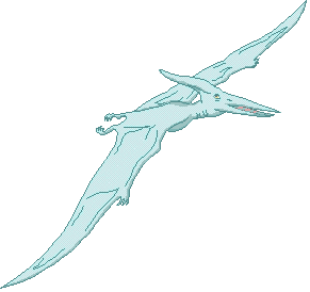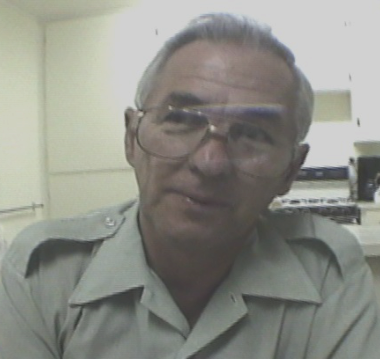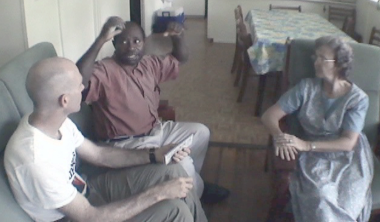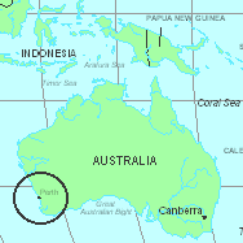Eyewitnesses of large featherless flying creatures


Pterosaurs Still Living
Alive in the southwest Pacific

Umboi Island, Papua New Guinea, is not the only place
in the southwest Pacific where people see pterosaurs or
pterosaur-like flying creatures. Most sightings are of a
creature with a long tail and no sign of any feathers.
Two Australians saw a giant reptilian-like animal flying
over Perth, Australia, in 1997. Both the husband and
wife were sure that it was a living creature with a very
long tail. Whitcomb and his associates in cryptozoology
believe that the ropen is a Rhamphorhynchoid (long-
tailed) pterosaur. This flying creature seen over Perth
may have been a species related to the ropen of Umboi
Island, Papua New Guinea.
The native Baptist minister, Jacob Kepas has had two
sightings in his life: As a boy, he saw a glowing seklo-
bali fly over his village; as a man looking for that kind of
animal, he saw what seemed to be a large creature that
was sleeping with its head under its wing: an indava.
That was on the same expedition in which Paul Nation
videotaped two glowing indavas near Tawa Village,
deep in the mainland of Papua New Guinea.
The missionary Jim Blume observed a glowing form, probably
a bioluminescent animal, on the shore of Manus Island, PNG.


Pastor Jacob Kepas, in an interview in Lae in 2004, tells Garth
Guessman about the giant seklo-bali flying creatures that he saw
on the mainland of Papua New Guinea, when he was a boy. The
nation (PNG) is also called Piugini by natives. (In some reports,
the Baptist minister’s first name is spelled “Jakob.”) Mary, on
the right, is wife of James Blume and helped by interpreting.

Perth is on the southwest coast of Australia

The entrance to Finschhafen Harbor, on the
mainland of Papua New Guinea (photo by
the American explorer Jonathan Whitcomb)

David Woetzel, Garth Guessman, and Jacob Kepas explored
Umboi Island in 2004, a few weeks after the expedition of
Jonathan Whitcomb and Luke Paina. This is Bono, a lake in
the interior of Umboi, near Mount Sual. This may be one of
the bodies of fresh water used by the ropen, the nocturnal
flying creature that explorers believe is a pterosaur. (Photo
is courtesy of Garth Guessman.) This lake is similar to the
crater lake Pung, which is to the southwest of Lake Bono.
Around 1994, seven island boys hiked up to Lake Pung and
were soon terrified to see the gigantic ropen fly overhead.

Brian Hennessy is another eyewitness of a
strange flying creature in New Guinea, in
the southwest Pacific. It was in 1971.
The “New Britain Creature” may be a Pterodactyloid, maybe
even a Pteranodon. Three Americans saw the creatures flying
in daylight over a period of many months.
ver-110
Eyewitnesses of large featherless flying creatures
Pterosaurs Still Living
Alive in the
southwest Pacific


The missionary Jim Blume observed a glowing form, probably
a bioluminescent animal, on the shore of Manus Island, PNG.


Pastor Jacob Kepas, in an interview in Lae in 2004, tells Garth
Guessman about the giant seklo-bali flying creatures that he saw
on the mainland of Papua New Guinea, when he was a boy. The
nation (PNG) is also called Piugini by natives. (In some reports,
the Baptist minister’s first name is spelled “Jakob.”) Mary, on
the right, is wife of James Blume and helped by interpreting.
Umboi Island, Papua New Guinea, is not the only place
in the southwest Pacific where people see pterosaurs or
pterosaur-like flying creatures. Most sightings are of a
creature with a long tail and no sign of any feathers.
Two Australians saw a giant reptilian-like animal flying
over Perth, Australia, in 1997. Both the husband and
wife were sure that it was a living creature with a very
long tail. Whitcomb and his associates in cryptozoology
believe that the ropen is a Rhamphorhynchoid (long-
tailed) pterosaur. This flying creature seen over Perth
may have been a species related to the ropen of Umboi
Island, Papua New Guinea.
The native Baptist minister, Jacob Kepas has had two
sightings in his life: As a boy, he saw a glowing seklo-
bali fly over his village; as a man looking for that kind of
animal, he saw what seemed to be a large creature that
was sleeping with its head under its wing: an indava.
That was on the same expedition in which Paul Nation
videotaped two glowing indavas near Tawa Village,
deep in the mainland of Papua New Guinea.

David Woetzel, Garth Guessman, and Jacob Kepas explored
Umboi Island in 2004, a few weeks after the expedition of
Jonathan Whitcomb and Luke Paina. This is Bono, a lake in
the interior of Umboi, near Mount Sual. This may be one of
the bodies of fresh water used by the ropen, the nocturnal
flying creature that explorers believe is a pterosaur. (Photo
is courtesy of Garth Guessman.) This lake is similar to the
crater lake Pung, which is to the southwest of Lake Bono.
Around 1994, seven island boys hiked up to Lake Pung and
were soon terrified to see the gigantic ropen fly overhead.


Perth is on the southwest coast of Australia

The entrance to Finschhafen Harbor, on the
mainland of Papua New Guinea (photo by
the American explorer Jonathan Whitcomb)

Brian Hennessy is another eyewitness of a
strange flying creature in New Guinea, in
the southwest Pacific. It was in 1971.
The “New Britain Creature” may be a Pterodactyloid, maybe
even a Pteranodon. Three Americans saw the creatures flying
in daylight over a period of many months.
ver-110